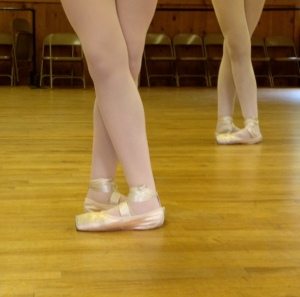Aesthetic Darwinism
by Andrew Swensen
There is a principle in the arts that I call “aesthetic Darwinism.” In broad terms, artistic activities are perpetual. We create two-dimensional images, we dance, we make music, and we tell stories. Yet certain forms, styles, and genres have a limited lifespan. At some point, an art is no longer productive in its current form, and we begin to think about it only as artistic conservation for posterity. To oversimplify the matter into a visual arts metaphor, we revere places like the Louvre or the Prado because they house the masters. However, no one is painting like DaVinci any longer. Painting lives on, but the Renaissance is decidedly over.
Da Vinci is a "genius", that is, he was talented in several areas: paintings, literature, mechanics. And he is one of the most important representatives of the Renaissance, because his contribution to art (and not only) is invaluable. In order to read more about da Vinci's contribution to the development of mankind, buy term papers online with the relevant topic.
The death and birth of artistic movements and genres reflect non-artistic factors like technological innovation, intersection of cultures, or changes in economics, politics, philosophy and religion. Photography and film arose because of technological innovation, and both are now giving way to the new world of digital media. Jazz, the blues, zydeco and rock and roll arose from cultural intersections of African, European and American peoples – and in the process replaced forebears rooted in single cultures. Some art forms just die by going out of fashion. Ultimately, we end up with no one choreographing a new pavane, composing for the sackbut, working in fresco, or writing epics.
Like all organic processes, artistic evolution is not necessarily a good or bad thing. What we might call aesthetic conservatism has value because it perpetuates established standards of excellence. Chinese calligraphy and medieval European iconography fit here, forms that did not change for centuries but rather celebrated fidelity to core aesthetic standards. However, imagination and innovation are standards of artistic excellence as well, and they depend on differentiation from an established norm, or at least slight variation within a norm – and the accumulation of slight variations will in time lead to a new form altogether. Thus a work is judged favorably by how “new” it is.
As art forms die off, their passing brings uncomfortable realizations to the arts community – ones that we are reluctant to own and discuss. How do we handle an art in decline? We may become bitter like Norma Desmone in Sunset Boulevard, who no longer acts in film once they have spoken dialogue, saying that “the pictures got small” because they have evolved. Silent film is done, a historic relic. The recent success of the silent film The Artist specifically depends on its anachronism, and on our historical awareness of its passing.
We may go smoothly from curators of contemporary art to conservators of bygone art. Some art forms have made this transition to historically authentic preservation. Someone is still teaching Homeric Greek, someone is still playing the viola da gamba faithfully, and someone is still learning the art of fresco, at least in order to preserve past masterpieces. Then you have hybrid challenges in the world of arts organizations working in both the new and the old. Classical music audiences seem to more want preservation, and a symphony that packs the house for Beethoven’s Ninth later struggles to get an audience for new work. In theater we have an interesting situation where some companies have the mission of presenting only new work, while others mix and match old and new.
All the while, tough questions keep arising. When do we let an art form die? Or keep it alive only as a historical artifact? While no one is choreographing new pavanes or gavottes, a few still know how to do it, and there is value in this dance equivalent of being an art conservator. Dance is interesting for another reason. While dance remains productive in the form of Chicago and other Broadway productions, any jazz dance choreographer still talks in the language and technique of ballet, a largely historic form. In fact, at Point Park University, the largest college dance program in my neck of the woods, the students of musical theater take only ballet during their first year of conservatory. So even if they really are training for Next to Normal or Nine, they still have to study a historical form. The world of pure ballet companies give us an interesting problem in their own right, for they contend daily with the tension between the old core repertoire and the creation of new work. I am particularly fond of Peter Martins’ efforts with New York City Ballet, his effort to keep it fresh and connect it with a younger audience. In the world of aesthetic Darwinism, some species survive but only if they know how to adapt and even thrive under new circumstances.
I do not mean to labor the metaphor, but as I have written before, the reality is that survival is the issue for some art forms – indeed for all art forms in the long run. On the one hand, if you do things the way that they have always been done, you will eventually meet an inevitable fate. On the other hand, so often that is exactly what nonprofit managers and boards do because they want to preserve something special, with good reason. Consequently, we face a conundrum: A) we want to preserve brilliant art B) the world changes.
If audiences keep declining for an art, some tough conversations need to happen. A small number of major donors or a few foundations may be keeping an organization on life support. Yet the time must come when they start wondering when to pull the plug. I brought this up to Brett Crawford, a faculty member in arts management at Carnegie Mellon University, and she referred to Bourdieu’s field theory. There is only finite room on the field, and as new arts arise, and new arts organizations with them, “Something has to fall off the field.” So to the question of when should an art form die, she has a concise answer: “When the market doesn’t care any more.”
Lest you think these thoughts despairing, I do not. I spend a great deal of effort in keeping some older art forms on the field. My ultimate conclusion is that some art is good enough that at least a few of us will carve out a corner of the universe to help it endure. At the same time, I celebrate the creation of the new, and the infinite capacity of the imagination. Somewhere in there, I also recognize the need to ask some very difficult questions.
Articles of Related Interest from The Muse Dialogue:
“A Question of Arts Survival” by Andrew Swensen
“The Penny University” by Andrew Swensen











